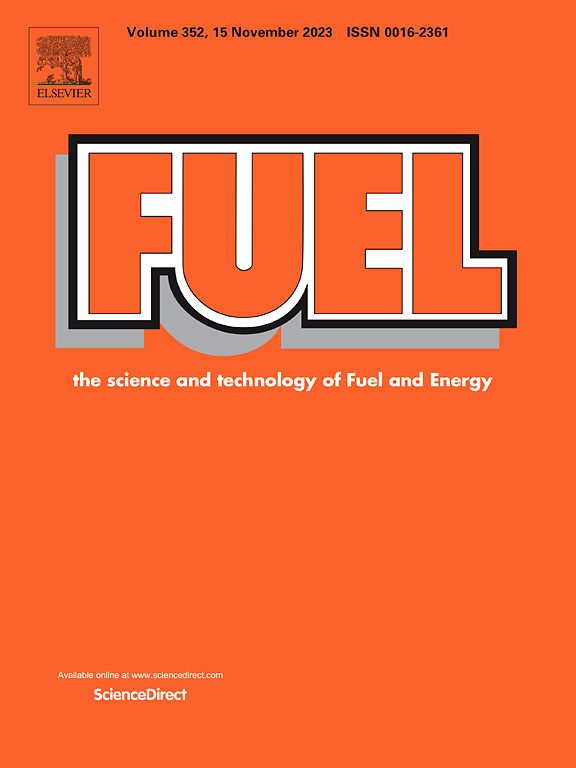Warm-mix rejuvenation effects of waste polyethylene wax and rejuvenator blends on aged asphalt binder
IF 7.5
1区 工程技术
Q2 ENERGY & FUELS
引用次数: 0
Abstract
This study developed a warm-mix rejuvenated additive (PRA) by blending equal parts of original and recycled polyethylene wax with 6 % rejuvenator, and incorporated varying dosages of PRA into different ratios of virgin and aged Styrene–Butadiene–Styrene (SBS) modified asphalt binders (ASAB). The resulting warm-mix rejuvenated SBS-modified asphalt binders were evaluated in terms of high-temperature rheology, fatigue property, low-temperature performance and microscopic characterization. High-temperature rheological showed that A40P2 (40 % ASAB + 2 % PRA) achieved a 37.8 % increase in complex modulus at 40 °C and a 35.4 % reduction in non-recoverable creep compliance, while creep recovery rate improved by 16.5 %, indicating enhanced rutting resistance and elasticity. Fatigue analysis revealed that 2 % PRA extended fatigue life by up to 42 % at 5 % strain, and 30 % ASAB content achieved optimal fatigue resistance. Low-temperature performance showed that increasing PRA and ASAB elevated stiffness and reduced integrated creep compliance, with A30P2 providing the best performance between low-temperature flexibility and stiffness. Microscopic characterization revealed that physical blending dominated at low PRA content, while chemical reactions such as esterification occurred at higher contents, as evidenced by weakened carbonyl groups and ether bonds. These reactions promoted molecular reorganization and enhanced the structural uniformity and thermal stability of the binder. This study offers a sustainable solution for enhancing the performance of rejuvenated asphalt binders, supporting the broader application of warm-mix rejuvenating technologies in practical pavement engineering.
废聚乙烯蜡与回春剂共混物对老化沥青粘结剂的温拌回春效果
本研究开发了一种温混再生添加剂(PRA),将相同比例的原始聚乙烯蜡和再生聚乙烯蜡与6%的再生剂混合,并将不同剂量的PRA掺入不同比例的原生和陈化苯乙烯-丁二烯-苯乙烯(SBS)改性沥青粘合剂(ASAB)中。从高温流变学、疲劳性能、低温性能和微观表征等方面评价了热混合再生sbs改性沥青粘结剂。高温流变学表明,在40℃时,A40P2 (40% ASAB + 2% PRA)的复合模量增加了37.8%,不可恢复蠕变柔韧性降低了35.4%,而蠕变恢复率提高了16.5%,表明抗车辙性和弹性增强。疲劳分析表明,在5%的应变下,2%的PRA可将疲劳寿命延长42%,而30%的ASAB含量可达到最佳的抗疲劳性能。低温性能表明,增加PRA和ASAB可以提高刚度,降低整体蠕变柔度,其中A30P2在低温柔度和刚度之间表现最佳。微观表征表明,低PRA含量时主要发生物理共混,而高PRA含量时发生化学反应,如酯化反应,羰基和醚键减弱。这些反应促进了分子重组,增强了粘结剂的结构均匀性和热稳定性。本研究为提高再生沥青粘结剂的性能提供了一种可持续的解决方案,支持了热拌料再生技术在实际路面工程中的广泛应用。
本文章由计算机程序翻译,如有差异,请以英文原文为准。
求助全文
约1分钟内获得全文
求助全文
来源期刊

Fuel
工程技术-工程:化工
CiteScore
12.80
自引率
20.30%
发文量
3506
审稿时长
64 days
期刊介绍:
The exploration of energy sources remains a critical matter of study. For the past nine decades, fuel has consistently held the forefront in primary research efforts within the field of energy science. This area of investigation encompasses a wide range of subjects, with a particular emphasis on emerging concerns like environmental factors and pollution.
 求助内容:
求助内容: 应助结果提醒方式:
应助结果提醒方式:


